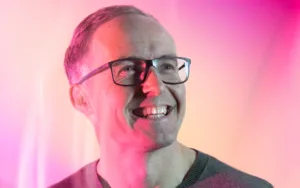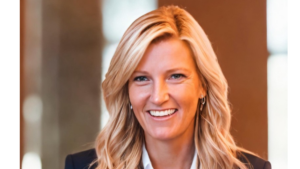By Sam Martin-Ross, UK Managing Director of Eskimoz.
Measuring and tracking are inescapable aspects of marketing, and marketers are used to being able to track the effectiveness of their campaigns through data and analytics.
Despite this, up to 95% of your web traffic could be coming from what is known as “dark social”, which refers to the invisible sharing that occurs through private social channels, making it very difficult to track.
This poses an interesting problem for both brands and marketers, who are used to having extensive data at their fingertips.
So, what do we mean by dark social, and could your brand be missing out on a marketing opportunity?
What is dark social?
First coined by Alexis Madrigal in a 2012 article for The Atlantic, dark social refers to how people share content and make brand mentions through their private social channels. This might include apps like Discord, Slack or WhatsApp, private messaging features on public social media platforms, or simply email, text and old-fashioned word-of-mouth.
It’s not a question of whether your customers are using dark social channels, but rather which particular channels they are using, regardless of the specific sector your business operates in. For example, in the US alone, a whopping 56.8% of people use Facebook Messenger, while WhatsApp has approximately 2.78 billion unique users as of June 2023.
All these channels share one thing in common – they cannot be accurately measured and tracked in the conventional ways utilised by marketers, meaning brands may miss out on valuable insights into their most effective channels and content, which could otherwise be used to optimise campaigns and marketing spend.
Metrics that matter
The prevalence of dark social sharing is a perfect example of why successfully measuring the efficacy of marketing efforts requires more than simply tracking every possible metric.
Take for example click-through rate [CTR]. While a campaign may garner a high CTR, or a social media post may amass many impressions, these metrics are not as useful as they first appear, unless they translate into meaningful conversions. Similarly, in-platform measurements of revenue and ROI don’t give a full picture, as these cannot account for dark social.
This illustrates the need to identify the metrics that are truly useful, and use these to build a bigger picture. While metrics and data can be incredibly useful when utilised strategically, brands must also focus on gaining a share of voice overall.
Peer recommendations, whether from close friends and family, influencers, or niche online communities, play a pivotal role in purchasing decisions, and dark social is a central component of this in the modern digital age. Being aware of this when designing campaigns and measuring their efficacy is central to forming a fuller picture of target consumers and creating social media content with greater dark social sharing potential.
Tapping into dark social
There are certain tactics that can be still be used to gain a better understanding of how dark social feeds into the bigger picture and tap into its potential.
One is to check the proportion of direct traffic in Google Analytics, excluding traffic to the homepage and landing page. Though this won’t give you an entirely accurate figure, it can act as a useful starting point.
Including prominent share buttons is helpful for promoting relevant content to your audience and encouraging them to share it through their preferred dark social channels. Adding UTM parameters – essentially URLs with a piece of tracking “code” included – to your share buttons have the added effect of enabling you to better track traffic to these links.
It’s also important to consider the potential for dark social shares when designing your content pages. Some dark social apps, like Slack, show previews of the URL when shared, so ensure your page has these properly set up. Similarly, making sure the page looks good when shared is helpful in getting more people to engage with it.
UTM links of referral links are another way to help keep track of dark social shares and get an idea of how much traffic comes in this way. More broadly, you can leverage dark social sharing by setting up dedicated referral programs, allowing people to more easily share your products or services, even incentivising them to do so.
Final thoughts
In the world of marketing, where everything is tracked, measured and analysed, it can appear as though dark social sharing essentially cuts brands out of the conversation.
Creating content and campaigns geared towards dark social sharing not only allows brands to tap back into the conversation around their brand narrative but also opens up more opportunities to harness the potential of authentic, organic audience engagement.









